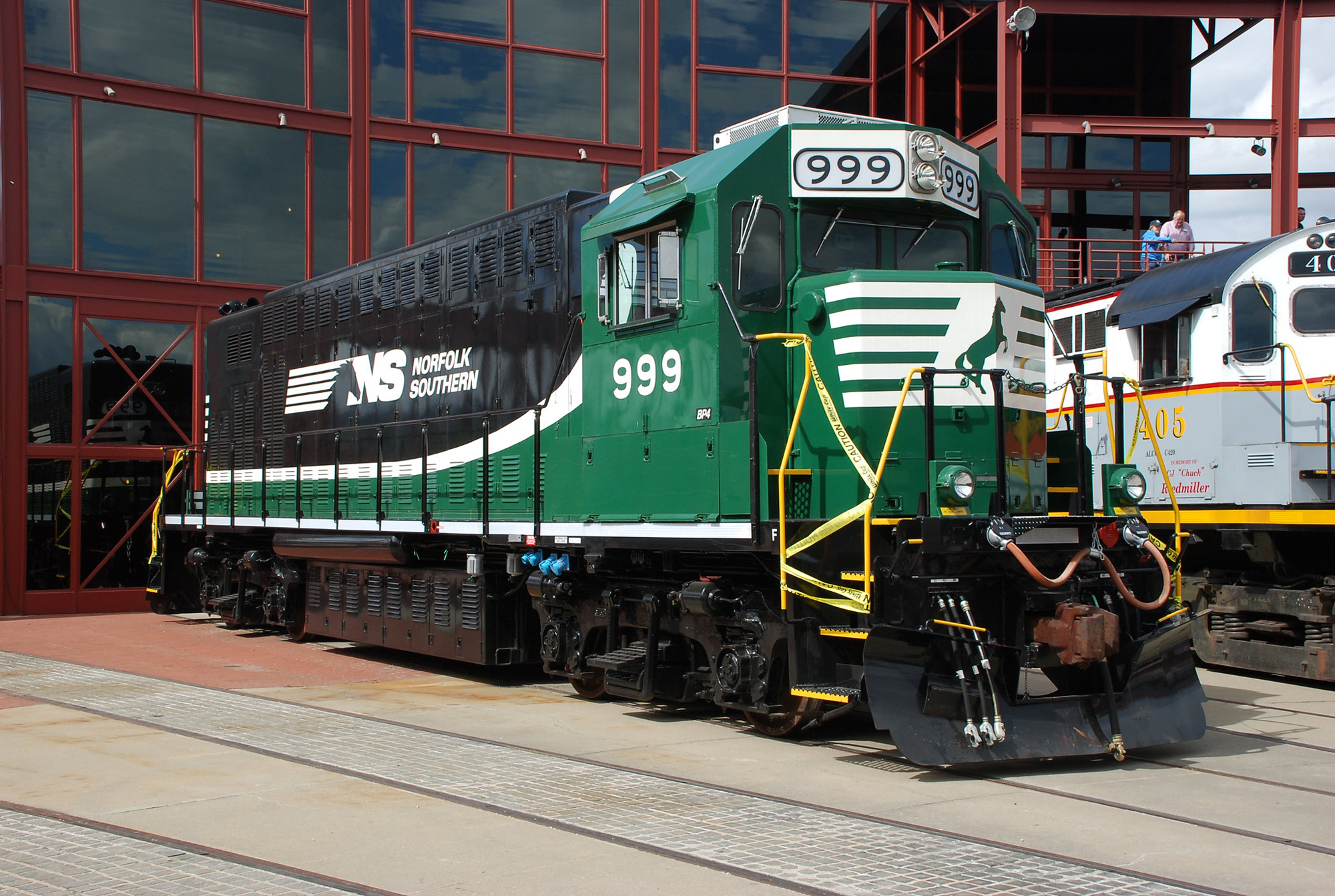BP4 #999: An NS/Altoona Testbed Battery-Electric
Published: August 18, 2024
By: Adam Burns
The BP4 stands as a testament to Norfolk Southern's commitment to innovative and sustainable locomotive technology.
This one-of-a-kind, 1,500-horsepower battery-electric design, designated #999, emerged from the railroad's Altoona Works in 2007. Representing a remarkable feat of engineering, the project involved transforming a conventional GP38 (ex-Conrail #7732 and formerly Norfolk Southern #2911) into a battery-powered workhorse.
The heart of the conversion involved replacing the GP38's diesel prime mover with a state-of-the-art battery system comprising 1,080 12-volt lead-acid batteries and sophisticated control equipment.
The result was a unique locomotive capable of performing switching and light freight duties with zero emissions, demonstrating the potential of battery technology in heavy-haul applications.
Unfortunately, it proved less than successful in service for NS. It is said the locomotive, which had to be plugged in to recharge its battery bank, could only operate for 2-3 work shifts before needing recharged.
After more than a decade of testing and occasional service, Norfolk Southern auctioned off the unit in November, 2019 along with several other locomotives. Today, it resides in California.
 Norfolk Southern BP4 #999 is on display at Steamtown in Scranton, Pennsylvania on September 4, 2010. This experimental unit was powered by 1,080 12-volt truck batteries and had to be plugged in to recharge. Doug Kroll photo.
Norfolk Southern BP4 #999 is on display at Steamtown in Scranton, Pennsylvania on September 4, 2010. This experimental unit was powered by 1,080 12-volt truck batteries and had to be plugged in to recharge. Doug Kroll photo.Heritage
The battery-electric locomotive concept is not new to railroading and can surprisingly be traced to the industry's earliest days. In 1842, Scottish engineer Robert Davidson operated an electric locomotive from a battery at 4 mph on the railway between Edinburgh and Glasgow.
(Source: Robert Routledge, Discoveries And Inventions Of The Nineteenth Century, 12th ed [London: Routledge, 1898], p. 454)
In addition, small battery powered critters could occasionally be found in yard service here and there across the U.S. throughout the 20th century. The modern battery powered road-switcher, however, is a relatively recent concept. It first gained traction with RailPower's designs that hit the market in 2001.
These early models utilized small, diesel generators (called gensets) for power only when the locomotive’s large bank of batteries required a recharge. Essentially, the batteries acted as the locomotive's prime mover while the generator was auxiliary power.
The company found early success with its environmentally friendly models. However, reliability issues caused sales to slow and RailPower entered bankruptcy in early 2009. It was acquired by RJ Corman, which continued to offer a catalog until 2020 when production ended.
Development
Despite its outward resemblance to a conventional diesel-electric locomotive, the BP4 is distinguished by the absence of a diesel engine. Instead, it relies on battery charging via an external power source.
The locomotive's efficiency is further enhanced by regenerative braking, which recaptures approximately 35% of the braking energy and returns it to the batteries. This conversion substantially alters the locomotive's appearance, with the cab (new) repositioned forward to accommodate a large louvered battery box in place of the traditional long hood. Additionally, the fuel tank is replaced by another battery compartment.
The development of the BP4 was a collaborative effort involving Norfolk Southern, Brookville Equipment, Penn State University, the United States Department of Energy, and the Federal Railroad Administration.
The program was supported by $1.3 million in federal funding. Initially converted in 2007, the locomotive faced early challenges with battery performance, prompting the installation of an advanced battery management system in 2009. A significant rebuild in 2014 saw the batteries upgraded from lead-acid to lead-carbon.
Heritage
| Owner | Model | Road Number | Serial Number | Order Number | Completion Date | Notes |
|---|---|---|---|---|---|---|
| Penn Central | GP38 | 7732 | 35361 | 7191 | 7/1969 | Became Conrail #7732, then Norfolk Southern #2911. |
Legacy
Despite the ongoing refinements, #999 ultimately fell short of meeting Norfolk Southern's operational needs, leading to the project's discontinuation. In November 2019, Norfolk Southern auctioned off #999, alongside several other locomotives.
The unit was acquired by Rail Propulsions Systems, where it underwent further upgrades for use in the Los Angeles Basin region. Today, it is under the reporting mark of BUGX, or Bruggere & Monson, a division of Dieselmotive Company, Inc. It still resides in California today.
Recent Articles
-
New Mexico Railroad Museums: A Complete Guide
Apr 23, 25 02:25 PM
The enchanting state of New Mexico, known for its vivid landscapes and rich cultural heritage, is home to a number of fascinating railroad museums. -
New Hampshire Railroad Museums: A Complete Guide
Apr 23, 25 02:11 PM
New Hampshire, known for its breathtaking landscapes, historic towns, and vibrant culture, also boasts a rich railroad history that has been meticulously preserved and celebrated across various museum… -
Minnesota Railroad Museums: A Complete Guide
Apr 22, 25 12:17 PM
The state of Minnesota has always played an important role with the railroad industry, from major cities to agriculture. Today, several museums can be found throughout the state.